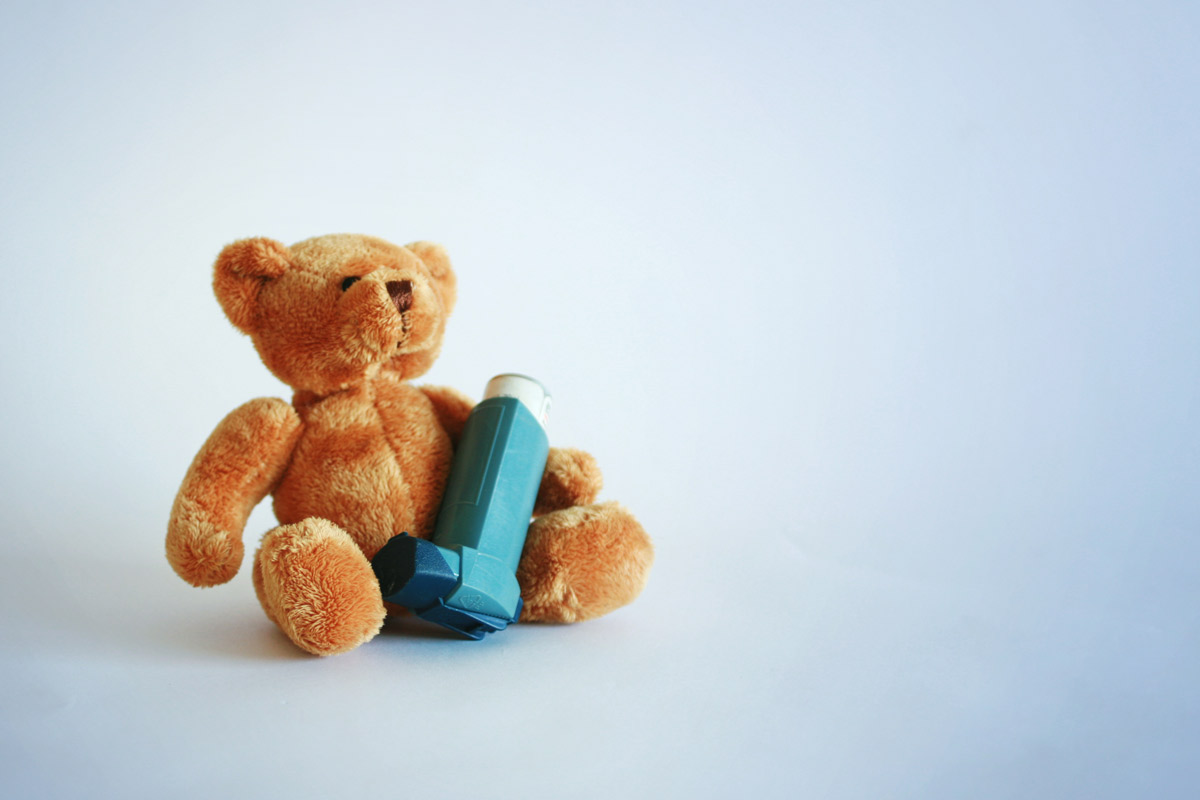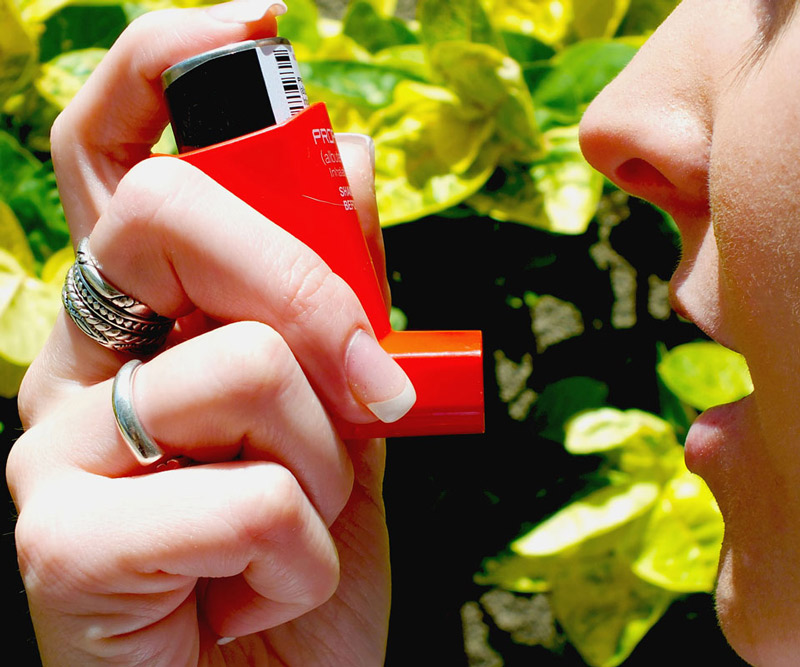
Childhood Asthma: Help Little Lungs Find Relief
Parents can run out of breath chasing around after their children. However, if your little one is frequently short of breath, has a constant cough or complains that his chest “feels funny,” he may have asthma.
Childhood asthma, also referred to as pediatric asthma, is a chronic condition in which the lungs and airways become inflamed when exposed to certain triggers, including:
- Allergens such as dust mites, pet dander, pollen or mold.
- Pollutants such as cigarette smoke.
- Viral infections.
- Physical activity (called exercise-induced asthma).
- Weather changes or cold air.
“Hawaii typically has one of the highest prevalences of asthma in the nation, but why we seem to have one of the highest reported child asthma prevalences has yet to be determined,” says Dr. Brian Wu, a pediatric pulmonologist at Kapiolani Medical Center for Women & Children.
“While it would be great to say that it is the pollution or the always prevalent vog, I think that is too simplistic a reason,” agrees Dr. Edward Fong, also a pediatric pulmonologist at Kapiolani. “Common triggers of asthma in Hawaii are probably the same as everywhere – viral infection, allergies and tobacco smoke.”
Similarly to asthma in adults, childhood asthma can flare up at any time and cause symptoms that interfere with day-to-day activities, such as school, sports and sleep.
Though there is no cure for childhood asthma, there are things both keiki and parents can do to reduce and alleviate symptoms.
“Learn what allergens and irritants set off asthma symptoms in your child, and take proactive steps to avoid them,” says Dr. Grace Galiza, a pediatrician at Kauai Medical Clinic’s Lihue offices.
“If your child needs to take daily medication to control allergy symptoms, don’t make it seem like a big deal. Instead, make it an everyday part of life,” Galiza adds.
Daily medication for allergy symptoms may include an antihistamine.
Depending on the severity of asthma symptoms, your child’s pediatrician also may prescribe “rescue medicine” like Albuterol or a controller medicine like Pulmicort. Albuterol helps open up the airways by decreasing constriction, and Pulmicort is a low-dose steroid that helps reduce inflammation.
“The best way to control asthma symptoms is to take your asthma controller medications regularly and consistently as the doctor has prescribed,” Galiza says.
Other ways to help manage asthma symptoms include the following:
Prevent
- Limit exposure to triggers – “Different people can have different things that trigger their asthma,” says Wu. “If there is a clear trigger for their asthma, avoid it. The one exception is exercise – if exercise triggers their asthma, they just need better asthma preventive medications so they can exercise.”
And on that note … - Get moving! – Regular physical activity conditions the lungs to work more efficiently. As long as your child’s asthma is well-controlled, make sure they are getting at least 60 minutes of exercise every day.
- Maintain a healthy weight – Being overweight can worsen your child’s asthma symptoms, as well as increase the risk of developing other health problems such as diabetes.
Adjust
- Keep a clean home environment – Reduce exposure to common asthma triggers such as dust mites, animal dander and pollen by cleaning your home at least once a week. To make the job easier, consider encasing pillows, mattresses and box springs in dust-proof covers, and switch out carpeting with hard flooring, and curtains with blinds.
“Have a ‘safe room’ where pets are not allowed, and make it a stuffed animal-free zone to reduce the presence of dust mites,” advises Fong. “In the immediate household environment, parents should eliminate tobacco/marijuana smoke, electronic cigarette vapors, and other pollutants, such as air fresheners, aerosolized fresheners, perfumes, colognes and body sprays.” - Use your A/C – Air conditioning not only helps reduce the amount of airborne allergens (pollen, dust, smoke) in the household, it also lowers indoor humidity. Be sure to have your air conditioning professionally checked every year and change filters according to the manufacturer’s instructions.
- Eliminate second-hand smoke – Residue from cigarette smoke can linger on clothes and cause respiratory irritation. Speak with your doctor on ways to quit smoking, or call 1-800-QUIT-NOW for resources to help kick the habit.
Be Prepared
- Monitor your child’s symptoms – It is not uncommon for asthma triggers and symptoms to change over time. Keep an eye on your child’s asthma, and work with your child’s doctor to adjust medications as needed.
- Stay calm under pressure – An asthma attack can be just as scary for parents as it is for their child. If your child’s asthma symptoms worsen, don’t panic, and involve your child in each step so he understands what is happening.
“The best way to control asthma symptoms is to take your asthma controller medications regularly and consistently as the doctor has prescribed,” Fong says.
“However, if a child is having asthma symptoms and they are not responding to their ‘rescue’ medication or are needing it more often than every four hours (unless directed by their physician to do more often), the earlier their parents contact the physician, the sooner they can get other medications to prevent a severe attack that may lead to hospitalization or an Emergency Department visit,” says Wu.
Kapiolani’s asthma management program, Breathe Easier, is a free class offered for parents from 6 to 7:30 p.m. on Tuesday evenings at Kapiolani. The sessions are led by a respiratory therapist and cover a variety of asthma-related topics.
To learn more, click here, or call Kapiolani’s Respiratory Services at 983-8689.
For parents on Kauai looking for a pediatrician to help monitor their keiki's asthma, call 808-245-1554 or click here.
Published on: May 10, 2017




